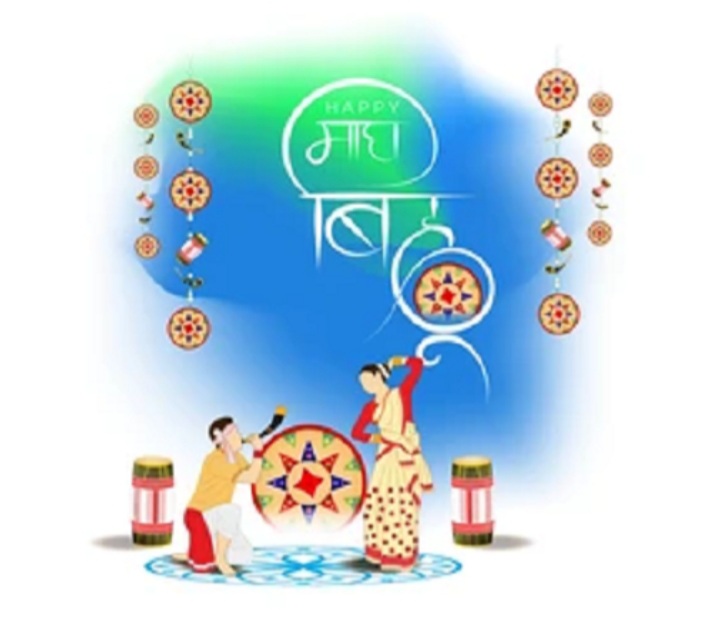The word “Bihu” has originated from the Sanskrit word Bishu, meaning “to ask blessings and prosperity from the God” before the beginning of the harvest season.
Bihu, a batch of three significant Assamese festivals in the Indian state of Assam—
Firstly, Rongali or Bohag Bihu is recognised as the most important of these three, celebrating spring festival observed in April.
Secondly, Kongali or Kati Bihu is recognised as the sombre, thrifty one reflecting a season of short supplies and is an animistic festival observed in October.
Thirdly, Bhogali or Magh Bihu The Bhogali Bihu or the Magh Bihu is a harvest festival, with community feasts observed in January.
MAGH BIHU’S ESSANCE:
Magh Bihu is also known as Makar Sankranti, The Assamese New Year! One of the first festivals celebrated in India. It is recognised each year, to sum up, the end of the winter solstice and to welcome the new season of harvest (crop production) in India. It is said that the next to this day, the weather starts to shift to warmer days which alter the cold and harsh weather.
It is fascinating to point out that the winter harvest festival Magh Bihu is celebrated all over India with numerous names. Each state and culture has its version of celebrations. In Punjab, it is celebrated as Lohri, while a similar festival is celebrated as Pongal in Tamil Nadu. In Karnataka, it is seen as Ugaadi and in Gujarat as Uttarayan.
Hence, Magh Bihu is one of those festivals in India that showcases its diversity in culture and tradition with love.
Magh Bihu is also recognised as harvesting (crop production) festival celebrated in India devoted to Lord Surya. While it is celebrated by various names and different ways across the length and breadth of India, it always falls between the 14th to 16th of January.
The vital importance of the festival is that it signifies the end of winter, It is majorly believed that days become longer and nights become shorter. Magh Bihu’s date also plays an essential role as it symbolises the harvesting culture. This is because, from the fourth day, farmers across the country start to harvest Rabi crops. Hence, it is prudent to say that food/crops play a vital role in this festival.
Moreover, while the people of the Indian state celebrate Magh Bihu in broader ways, people mostly wake up early in the morning, take dip baths in the holy river Ganga and offer prayers to the Sun God.
Likewise, irrespective of state beliefs, all Indians clean up their houses and decorate them to bring in the joyous essence and the happiness that the sun god will convey to them.
The first day of Magh Bihu is known as Uruka (the Bihu Eve). The word Uruka has originally emerged from the Deori (the locals of Assam)- Chutia word Urukuwa which means “to end”, implying the end of the harvesting season as well the Pausha month (Jan-Feb). On this day, women folks get ready with excitement for the next day with local food items like- Chira, Pitha, Laru, Curd. A feast is organised at night known as Bhuj (derived from the Sanskrit word “Bhojana”). Various indigenous (adivasis) communities prepare their rice, beers usually undistilled like Chuji by Chutiyas, Nam-Lao by Tai-Ahom, Zou by Bodos, Aapong by Missing Tribe. Uruka feasting may be a family event or communal. After the feasting, the Uruka gets over. Hut-like layouts called “Belaghar” are also built in the fields where people stay the night over. Frequently the youth of the village is seen to pass the night in the Bhelaghars while warming themselves by the fire and making use of the vegetable peels that they steal from the backyards of villagers which is considered a traditional belief.
“ভোগালী বিহু বতৰত মেজি ঘৰত পিঠা খোৱা পৰত তোমালৈ মাঘ বিহুৰ হিয়াভৰা শুভকামনা জনালো ।”
Neha Mandal
Internship Trainee

